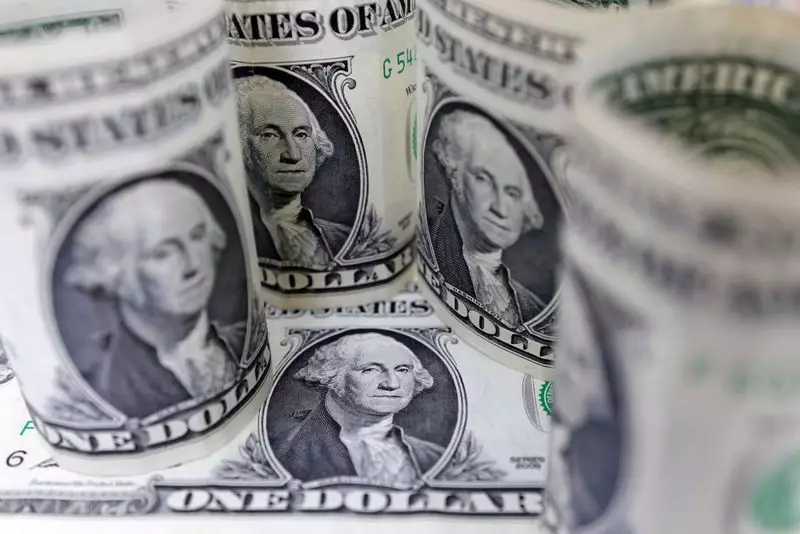The financial world often mirrors the ebb and flow of national politics, and nowhere is this more evident than in the currency markets, especially as the United States approaches a pivotal presidential election. Recent interactions between trader sentiment, polling data, and economic indicators have created a tapestry of uncertainty that is reshaping the landscape for currencies like the U.S. dollar.
As election day dawned, the U.S. dollar found itself on the back foot, a trend that can be directly correlated to shifting predictions about the outcome of the presidential race. Traders, keenly attuned to recent poll results, adjusted their positions with apprehension, particularly in light of Democrat Kamala Harris’s rising odds on various betting platforms. These developments have unsettled a market that, until recently, had tilted heavily towards a Republican victory, which many analysts believe to be inflationary. As Trump’s economic policies are seen as favoring short-term gain, his potential return to office had driven a surge in U.S. Treasury yields and bolstered the dollar’s position.
However, as a weekend opinion poll indicated an unexpected lead for Harris in traditionally Republican Iowa, the dollar not only faltered but fell to 103.67—a level not seen since late October. The ensuing reactions in currency pairs like the euro and the yen highlight just how significant these polling revelations were in swaying trader sentiment.
Market analysts are paying keen attention to the dollar’s fluctuating index, which remained relatively stable at 103.91 after a sharp decline. This index measures the dollar against six major currencies, underscoring its relative stability amidst wider economic and political uncertainty. Despite its recent struggles, traders were also cautious of any sudden shifts spurred by voting irregularities or disputes—a phenomenon reminiscent of the 2020 elections where Trump resisted conceding defeat.
Carol Kong from Commonwealth Bank of Australia warns of potential volatility, suggesting that should Harris win, a modest decline—between 1% to 2%—in dollar value might follow. In contrast, a Trump victory could lead to a substantial rebound in the dollar’s value, signifying the direct impact of political outcomes on currency stability.
Contrary to traditional currencies, Bitcoin saw a favorable uptick, climbing 1.6% amid the political tumult. Analysts suggest that Trump’s presidency has historically posed a more amiable environment for cryptocurrencies compared to Harris, whose policies may not align as closely with the interests of crypto investors. Hence, the cryptocurrency market appears to thrive even when conventional currency markets wade through uncertainties, hinting at a diversification in investment sentiment.
The juxtaposition of political forecasts with market fluctuations is becoming increasingly complex. In addressing this, analysts at TD Securities shed light on their projections: a second Trump term is anticipated to be bullish for the U.S. dollar, whereas a Blue Wave—signifying a sweeping Democratic victory—could precipitate a sharp decline in dollar value.
Further complicating matters is the impending decision from the Federal Reserve regarding interest rates. A quarter-point rate cut is anticipated, yet the accompanying narratives around employment and economic health are beginning to evolve. The latest job figures reported by employers fall short of market expectations, generating questions about the underlying strength of the labor market. Such data influences both investor confidence and currency stability.
Across the pond, the Bank of England is also expected to enact its rate cut, correlating with fears of inflation and economic stagnation. With various central banks adjusting monetary policies in response to domestic pressures, the interconnectivity of global finance is increasingly evident.
While Australia has opted for a pause in policy changes, its currency is struggling to gain traction. The Australian dollar hovered close to last week’s lows, indicating an underlying fragility that echoes the broader volatility in the currency marketplace.
The intricate nexus between politics and currency valuation underscores the importance of staying informed on electoral trends and economic indicators. As the U.S. election unfolds, market participants must remain agile, mindful that governmental policies can shape economic realities. The potential for swift shifts in currency valuation necessitates careful planning and foresight.
For investors and traders alike, understanding the narrative behind these fluctuations becomes essential. The immediate aftermath of the election will undoubtedly set the tone for currency markets, influencing countless decisions and strategies in the weeks and months to follow. As always, navigating these turbulent waters requires a keen eye, a steady hand, and a thorough grasp of the interplay between politics and finance.


Leave a Reply